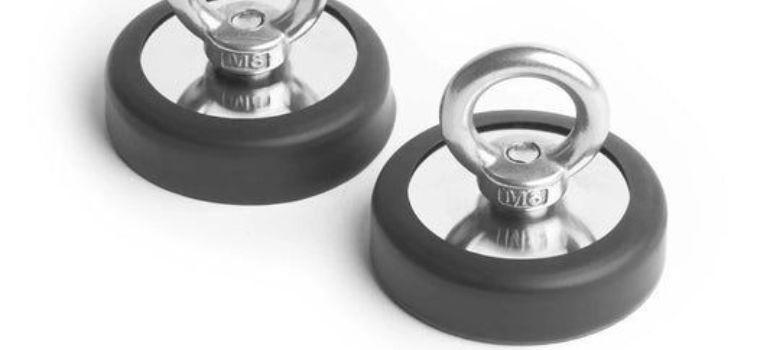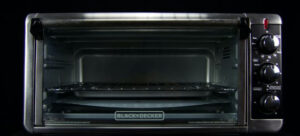When it comes to ensuring the safety of workers who need to access rooftops for various tasks, installing permanent roof anchors is a crucial step. Permanent roof anchors provide a secure attachment point for personal fall protection systems, such as harnesses and lanyards. In this comprehensive guide, we will walk you through the process of installing permanent roof anchors to ensure the safety of your workers while complying with industry regulations.
Understanding the Importance of Permanent Roof Anchors
Before we dive into the installation process, let’s first understand why permanent roof anchors are essential. These anchors serve as a critical component of fall protection systems, offering the following benefits:
Fall Prevention
Permanent roof anchors are designed to prevent falls from heights. They provide a secure point of attachment, allowing workers to move around the rooftop while remaining safely connected to a lifeline.
Compliance with Regulations
In many regions, regulatory bodies mandate the use of fall protection systems, including permanent roof anchors, to ensure the safety of workers. Non-compliance can result in significant fines and legal consequences.
Worker Confidence
When workers know they have access to reliable fall protection equipment, their confidence increases, leading to better job performance and reduced accidents.
Step-by-Step Guide to Installing Permanent Roof Anchors
Now that we’ve established the importance of permanent roof anchors, let’s delve into the installation process. Follow these steps to ensure a secure and compliant installation:
Step 1: Roof Inspection
Before embarking on the installation of permanent roof anchors, it is crucial to conduct a thorough roof inspection. The purpose of this inspection is to ensure the structural integrity of the roof and identify any potential hazards that could affect the installation process or compromise worker safety.
Here are the key steps to follow during a roof inspection:
- Visual Examination: Begin by visually inspecting the entire roof surface. Look for signs of damage, deterioration, or any visible issues such as cracks, holes, or loose roofing materials. Take note of any areas that require repair before proceeding with the anchor installation.
- Structural Assessment: Check the roof’s structural elements, such as trusses, rafters, and beams, to ensure they are in good condition. Any signs of structural weakness or damage should be addressed promptly to guarantee the stability of the roof.
- Existing Anchor Points: If there are existing anchor points on the roof, inspect them to ensure they are secure and in compliance with safety standards. Determine whether any of these anchor points need reinforcement or replacement.
- Roof Material: Consider the type of roofing material used on the roof, as this will influence the selection of the appropriate permanent roof anchor. Different materials may require specific installation methods or anchor types.
- Weathering and Exposure: Assess the roof’s exposure to weather conditions, including sun, rain, wind, and temperature fluctuations. Weathered roofs may have weakened structural components, so extra precautions may be necessary.
- Access Points: Identify safe and convenient access points to the roof. Ensure that there are secure pathways for workers to reach the installation sites of the permanent roof anchors without risking falls or accidents.
- Ventilation and Utilities: Be mindful of roof features such as vents, HVAC systems, and utilities. Ensure that the installation of permanent roof anchors does not interfere with these components or compromise their functionality.
- Documentation: Document your findings, including photographs of any issues or potential installation sites for permanent roof anchors. This documentation will be valuable for planning and ensuring compliance.
- Professional Assessment: If you are uncertain about the condition of the roof or the suitability of anchor locations, consider seeking the expertise of a roofing professional or structural engineer. Their insights can help make informed decisions.
Step 2: Selecting the Right Anchor
Choose the appropriate type of permanent roof anchor based on your roof’s material and structure. Common types include adhesive anchors, mechanical anchors, and fixed-point anchors.
Step 3: Anchor Placement
Once you’ve conducted a thorough roof inspection and selected the appropriate type of permanent roof anchor, the next crucial step is determining where to place these anchors. Proper anchor placement is essential for ensuring the safety of workers and compliance with safety regulations.
Here are the key considerations for anchor placement:
- Coverage Area: Start by identifying the specific areas on the roof where workers will need to access. Ensure that the permanent roof anchors are strategically placed to cover these areas adequately. The goal is to provide secure attachment points wherever work is required.
- Spacing: Pay attention to the spacing between the anchors. Spacing requirements may vary depending on the type of anchor and local safety regulations. Typically, anchors should be evenly spaced to ensure even distribution of load and to accommodate multiple workers if needed.
- Load Capacity: Each permanent roof anchor is designed to support a specific load capacity. Be aware of the weight that the anchor can safely hold and ensure it aligns with the intended use. The load capacity should always exceed the combined weight of the worker and their equipment.
- Roof Structure: Consider the roof’s structural elements when determining anchor placement. Anchors should be attached to load-bearing members, such as trusses or rafters, to ensure maximum strength and stability.
- Accessibility: Ensure that the anchor locations are easily accessible for workers. This includes providing clear pathways to reach the anchor points safely. Avoid obstacles or obstructions that could hinder movement.
- Clearance: Check for any potential obstructions or hazards around the anchor placement area. Ensure that there is sufficient clearance for workers to move freely while connected to the lifeline.
- Fall Clearances: Be mindful of fall clearances, which refer to the distance a worker can fall before the lifeline engages. The placement of anchors should allow for safe fall clearances and prevent workers from striking lower levels or obstacles.
- Orientation: Consider the orientation of the anchor. The anchor point should be oriented to allow for a direct connection to the worker’s fall protection equipment, such as harnesses and lanyards.
- Manufacturer’s Guidelines: Always follow the manufacturer’s guidelines for anchor placement. The manufacturer will provide specific recommendations and requirements for the anchor’s installation and use.
- Compliance: Ensure that the placement of permanent roof anchors complies with local safety regulations, industry standards, and any specific requirements from regulatory bodies.
- Documentation: Document the placement of each anchor, including its coordinates on the roof. This documentation is essential for maintenance, inspection, and ensuring ongoing compliance.
- Load Testing: After placement, conduct load testing on each anchor to verify its strength and stability. This step ensures that the anchors can safely support the intended load in case of a fall.
Step 4: Attachment Method
After determining the appropriate location for your permanent roof anchors, the next crucial step in the installation process is selecting and executing the correct attachment method. The attachment method you choose will depend on various factors, including the type of anchor you’re using and the roof’s structure. Proper attachment ensures that the anchors are secure and capable of withstanding the forces they may encounter during a fall.
Here’s a guide to the attachment methods commonly used for permanent roof anchors:
- Adhesive Anchors:
- Adhesive anchors are often used for roofs with concrete or other solid substrates. The attachment method involves drilling holes into the roof surface and filling them with adhesive.
- Clean the surface thoroughly to remove dust, debris, and contaminants that could affect the adhesive’s effectiveness.
- Follow the manufacturer’s instructions for mixing and applying the adhesive.
- Insert the anchor into the adhesive-filled hole and allow it to cure according to the recommended curing time.
- Mechanical Anchors:
- Mechanical anchors are suitable for various roof types, including metal and wooden roofs. They are attached using mechanical fasteners like screws or bolts.
- Ensure that the anchor’s attachment points align with structural elements such as rafters or trusses for maximum strength.
- Use the appropriate tools and hardware as specified by the anchor manufacturer to secure the anchor to the roof structure.
- Tighten the fasteners to the recommended torque levels to ensure a secure connection.
- Fixed-Point Anchors:
- Fixed-point anchors are designed to be attached to existing structural elements, such as beams or columns. They provide a reliable anchor point without the need for drilling.
- Inspect the structural element to ensure it is in good condition and capable of supporting the anchor and the intended load.
- Attach the anchor to the structural element using the recommended hardware and brackets. Ensure a tight and secure fit.
- Roof Membrane Anchors:
- For roofs covered with membrane materials, specific roof membrane anchors are available. These anchors are designed to penetrate the membrane without compromising its integrity.
- Follow the manufacturer’s instructions for installing roof membrane anchors. This often involves making a precise cut in the membrane, securing the anchor, and sealing the cut to prevent water infiltration.
- Sealant and Flashing:
- Regardless of the attachment method used, it’s essential to seal around the anchor to prevent water leakage. Use appropriate sealants and flashing materials to create a watertight seal.
- Ensure that the flashing extends beyond the anchor point to direct water away from the attachment.
- Manufacturer’s Guidelines:
- Always refer to the manufacturer’s guidelines for the specific anchor you are using. Manufacturers provide detailed instructions on attachment methods, hardware, and sealing requirements.
- Inspection:
- After attaching the anchor, conduct a visual inspection to ensure that it is securely in place and that all fasteners are properly tightened.
- Document the installation, including photographs, to keep records for future reference and compliance.
Step 5: Load Testing
Load testing is a crucial step in the installation process of permanent roof anchors. It involves subjecting the installed anchors to specific loads to ensure their strength and stability. The primary goal of load testing is to verify that the permanent roof anchors can safely support the intended load in case of a fall. Proper load testing is essential to guarantee the safety of workers who will rely on these anchors while working at heights.
Here’s a comprehensive guide to load testing for permanent roof anchors:
- Understanding Load Capacity:
- Before conducting load testing, it’s essential to understand the load capacity of the permanent roof anchors. Each anchor is designed to support a specific maximum load, which should be clearly specified by the manufacturer.
- Equipment and Setup:
- To conduct load testing, you’ll need appropriate equipment, including calibrated weights, pulleys, and a load-measuring device. Ensure that all equipment is in good working condition.
- Rig the testing setup in a way that simulates real-world conditions. This may involve attaching a lifeline or lanyard to the anchor and connecting it to the load.
- Gradual Application of Load:
- Load testing should be performed gradually to prevent sudden and excessive stress on the anchor. Begin by applying a fraction of the anchor’s maximum load capacity.
- Monitor the anchor’s response to the load at each increment to ensure there are no signs of failure or deformation.
- Duration of Testing:
- Maintain the load for a specified duration, typically several minutes, to assess the anchor’s ability to withstand the load over time.
- During this period, closely observe the anchor for any signs of movement, deformation, or damage.
- Incremental Increase:
- Continue to increase the load incrementally until it reaches the anchor’s maximum capacity. At this point, the anchor should be able to support the load without any signs of failure.
- Record and Documentation:
- Throughout the load testing process, meticulously record all relevant data, including the load applied, duration, and any observations or measurements.
- This documentation is essential for future reference, compliance, and ongoing maintenance.
- Failure Criteria:
- Define clear failure criteria before conducting load testing. If the anchor exhibits any signs of failure, such as excessive movement, deformation, or detachment, the test should be stopped immediately.
- Failed anchors should be replaced or repaired promptly, and a retest should be conducted.
- Retesting After Installation:
- After completing load testing successfully, the anchor is ready for use. However, it’s advisable to conduct another load test after installation to ensure that no damage occurred during the installation process.
- Regular Inspections:
- Even after successful load testing, permanent roof anchors should undergo regular inspections to ensure their continued reliability. Inspections should be conducted at least annually or as recommended by the manufacturer.
- Compliance and Regulations:
- Always ensure that load testing is performed in accordance with local safety regulations and industry standards. Compliance is essential for the safety of workers and liability protection.
Step 6: Lifeline Installation
Attach the lifeline to the permanent roof anchor following the manufacturer’s guidelines. Make sure the lifeline is free from obstructions and provides a clear path for movement.
Step 7: Worker Training
Train all workers on the proper use of the fall protection system, including how to connect to the permanent roof anchors and use their personal protective equipment (PPE) correctly.
Step 8: Regular Inspections
Schedule regular inspections and maintenance to ensure the permanent roof anchors remain in good condition. Replace any damaged or worn components promptly.
Conclusion
Installing permanent roof anchors is a critical step in ensuring the safety of workers who need to access rooftops. By following the steps outlined in this guide, you can create a secure and compliant fall protection system that reduces the risk of accidents and keeps your workers safe.
Frequently Asked Questions
Permanent roof anchors come in various types to accommodate different roof materials and structures. Consult with a professional to determine the best anchor for your specific roof.
Regulations vary by region, but in many places, using permanent roof anchors is mandatory when working at heights. Always check local laws and industry standards.
While some experienced individuals may be able to install roof anchors, it’s generally recommended to hire a qualified professional to ensure proper installation and compliance with safety regulations.
Regular inspections and maintenance should be conducted at least annually, or more frequently if your roof is exposed to harsh weather conditions.
It’s essential to assess the compatibility of existing anchors with the new roofing material. In some cases, anchors may need to be replaced or modified to ensure a secure connection.



